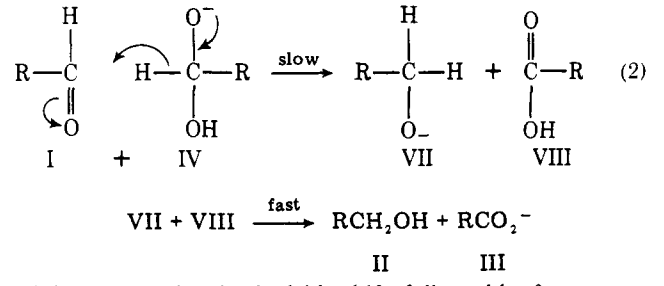If you'd like to read more about this mechanism, you should out this paper:
Swain, C. G.; Powell, A. L.; Sheppard, W. A.; Morgan, C. R. Mechanism of the Cinazzaro Reaction, 1979, Am. Chem. Soc. 3576
They did a kinetic study with deuterium oxide. They gave two equivalent mechanisms:

and

I think that this mechanism, which is essentially what you have shown except with intramolecular hydride shift (it cannot shift through solution) is the way I would represent it. It makes sense that this can happen if you think of the transition state. In my mind, it makes sense that this hydride transfer can occur given the very electrophilic nature of the aldehyde.
This is the transition state:





